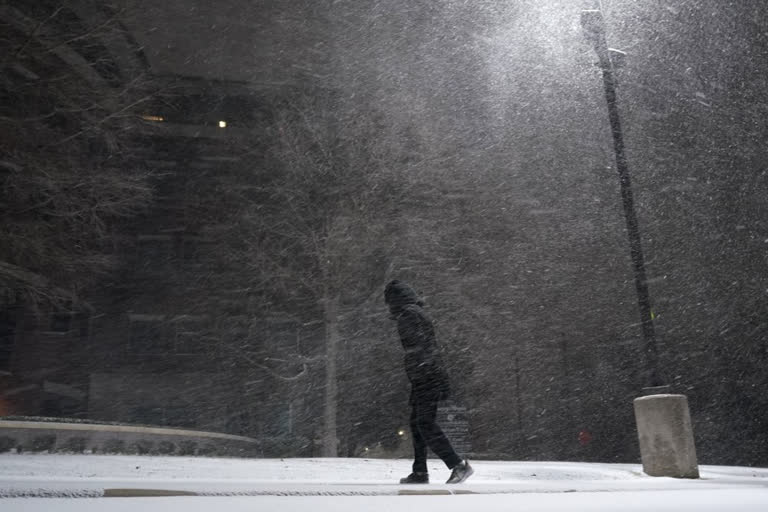Austin:A sprawling blast of winter weather across the U.S. is likely to blame for the deaths of two people in Texas, where an unusually snowy emergency on Monday knocked out power for more than four million people, shut down grocery stores and air travel and closed schools ahead of frigid days still to come.
As nightfall threatened to plummet temperatures again into single digits, officials warned that homes still without power would likely not have heat until at least Tuesday, as frustration mounted and the state’s electric grid came under growing demand and criticism.
“Things will likely get worse before they get better,” said Harris County Judge Lina Hidalgo, the top elected official in the county of nearly 5 million people around Houston.
The toll of the worsening conditions included the delivery of new COVID-19 vaccine shipments, which were expected to be delayed until at least midweek. Massive power outages across Houston included a facility storing 8,000 doses of Moderna vaccine, leaving health officials scrambling to find takers at the same time authorities were pleading for people to stay home.
Temperatures nosedived into the single-digits as far south as San Antonio, and homes that had already been without electricity for hours had no certainty about when the lights and heat would come back on, as the state’s overwhelmed power grid began imposing blackouts that are typically only seen in 100-degree Fahrenheit (38-degree Celsius) summers.
Read:|Major snowstorm heads to US Northeast coast
The storm was part of a massive system that brought snow, sleet and freezing rain to the southern Plains and was spreading across the Ohio Valley and to the Northeast. The Southwest Power Pool, a group of utilities across 14 states, called for rolling outages because the supply of reserve energy had been exhausted. Some utilities said they were starting blackouts, while others urged customers to reduce power usage.
“We’re living through a historic event going on right now,” said Jason Furtado, a professor of meteorology at the University of Oklahoma, pointing to all of Texas under a winter storm warning and the extent of the freezing temperatures.
State officials said surging demand, driven by people trying to keep their homes warm, and cold weather knocking some power stations offline had pushed Texas’ system beyond the limits.
“This weather event, it’s unprecedented. We all living here know that,” said Dan Woodfin, senior director of system operations at the Electric Reliability Council of Texas. He defended preparations made by grid operators and described the demand on the system as record-setting.
“This event was well beyond the design parameters for a typical, or even an extreme, Texas winter that you would normally plan for. And so that is the result that we’re seeing,” Woodfin said.
More than 500 people were hunkering down at one shelter in Houston, but Mayor Sylvester Turner said other warming centres had to be shut down because those locations, too, lost power.
The largest grocery store chain in Texas, H-E-B, closed locations around Austin and San Antonio, cities that are unaccustomed to snow and have few resources to clear roads. The slow thaw and more frigid lows ahead was also taking a toll on Texas’ distribution of COVID-19 vaccines.
State health officials said Texas, which was due to receive more than 400,000 additional vaccine doses this week, now does not expect deliveries to occur until at least Wednesday.
The weather also put existing vaccine supply in jeopardy. Rice University on Monday abruptly began offering vaccines on its closed Houston campus after Harris Health System told the school it had about 1,000 vaccines that “were going to go to waste,” said Doug Miller, a university spokesman.
